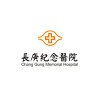
Evaluation of a Full Face Mask for the Treatment of Obstructive Sleep Apnea (OSA) in NZ
Obstructive Sleep ApneaThis investigation is designed to evaluate the performance (leak and comfort) as well as participant's overall acceptance of the investigative full face mask amongst OSA participants.

Screening and Treatment of Obstructive Sleep Apnea in High-risk Pregnancy
Sleep ApneaObstructive3 moreThis is an open-label multicenter randomized-controlled trial in 3 tertiary care hospitals including Ramathibodi Hospital, Phramongkutklao Hospital and Rajavithi Hospital. The study involved screening of obstructive sleep apnea in high risk pregnancy during 1st and 2nd trimesters. Randomization to either continuous positive airway pressure (CPAP) or usual antenatal care (ANC) until delivery will be done. Efficacy of CPAP on pregnancy outcome will be analysed.

The Effectiveness of SensAwake™ for Continue Positive Airway Pressure Treatment of Obstructive Sleep...
Obstructive Sleep ApneaThis study will investigate Obstructive Sleep Apnea (OSA) and an automatically Adjusting Positive Airway Pressure (APAP) device with new technology called SensAwake™. This requires experimental confirmation in a randomised controlled trial with crossover design, comparing compliance on standard APAP with compliance using APAP modified by the addition of the SensAwake™ modification on consecutive nights in participants with moderate-to-severe OSA.

Multinight CPAP for Sleep Apnea Patients
Sleep ApneaSleep Disordered BreathingObstructive sleep apnea (OSA) is a prevalent disorders characterized by intermittent obstructions of the upper airway during sleep. Continuous Positive Airway Pressure (CPAP) has been shown to be the most efficacious treatment for OSA. It consists of a small device that provides positive airway pressure delivered by a mask attached to the patients nose/mouth.

Effect of Desipramine on Upper Airway Collapsibility and Genioglossus Muscle Activity in Patients...
Sleep ApneaObstructiveObstructive sleep apnea (OSA) is common and has major health implications but treatment options are limited. OSA patients show a marked reduction in upper airway (UA) dilator muscle activity at sleep onset and this phenomenon leads to increased collapsibility of UA compared to normal participants. Until recently, the search for medicines to activate pharyngeal muscles in sleeping humans has been discouraging. However, exciting new animal research has shown that drugs with noradrenergic and antimuscarinic effects can restore pharyngeal muscle activity to waking levels. In this protocol the investigators will test the effect of desipramine (a tricyclic antidepressant with strong noradrenergic and antimuscarinic effects) on upper airway collapsibility and genioglossus muscle activity (EMG GG) during sleep in OSA patients.

The Evaluation of a Mask Seal/Mask for the Treatment of Obstructive Sleep Apnea (OSA)
Sleep Disordered BreathingObstructive Sleep ApneaThis investigation is designed to evaluate the performance as well as the patients overall acceptance of the seal/mask.

A Development Study to Evaluate a Nasal Mask for the Treatment of Obstructive Sleep Apnea
Obstructive Sleep ApneaThis investigation is designed to evaluate the comfort, ease of use and performance of a trial nasal mask for the treatment of Obstructive Sleep Apnea (OSA) in the home environment.

Effect of Non-surgical Periodontal Treatment on Oxidative Stress and Antioxidant Status in OSAS...
PeriodontitisObstructive Sleep Apnea1 moreThe main objective of this study is to investigate whether the non-surgical periodontal treatment of patients with periodontitis and obstructive sleep apnea syndrome (OSAS) affects the prognosis of OSAS positively with polysomnographic, serum and saliva parameters.

The Impact of Arousal Threshold in Obstructive Sleep Apnea
Obstructive Sleep ApneaThe investigators hypothesis is that obstructive sleep apnea (OSA) patients with a low arousal threshold may wake up too early during a respiratory event, before upper airway muscles can be activated to achieve stable ventilation. Thus, strategies to manipulate the respiratory arousal threshold could potentially improve the quality of sleep and sleep disordered breathing. Agents that raise arousal threshold are therefore likely to benefit some patients with OSA. The overall goal of this project is to determine the importance of the arousal threshold in OSA, determine which patients might benefit from a raised arousal threshold, and test this hypothesis by using pharmacological manipulation of the arousal threshold to achieve this goal.

Zonisamide for the Treatment of Obstructive Sleep Apnea in Overweight/Obese Patients
Sleep ApneaObstructive Sleep Apnea1 moreThis RCT explores the efficacy of Zonisamide (Zonegran®)on overweight/obese in patients with moderate to severe obstructive sleep apnea. Patients will be randomized to receive zonisamide, placebo or nasal continuous positive airway pressure (nCPAP) during 4 weeks. A 5 month open extension part will follow when patients in the tablet groups will all receive zonisamide. Patients in the open CPAP group will continue with CPAP treatment. Study hypothesis: Controlled pharmacological weight reduction with Zonisamide will result in elimination of OSA and OSA sequels more effectively than nCPAP due to incomplete compliance with the mechanical treatment and a lack of direct beneficial metabolic effects after nCPAP. Further it is hypothesized that zonisamide has a direct pharmacological effect on respiratory control during sleep by its carbonic anhydrase inhibitory effects and this will result in a reduction of sleep disordered breathing.
